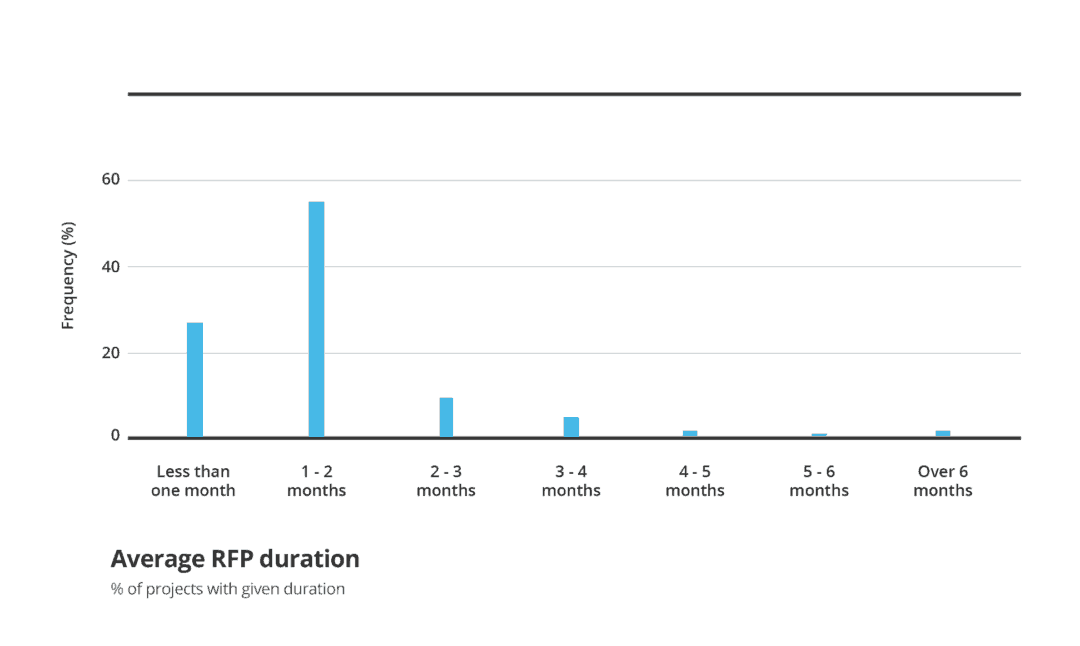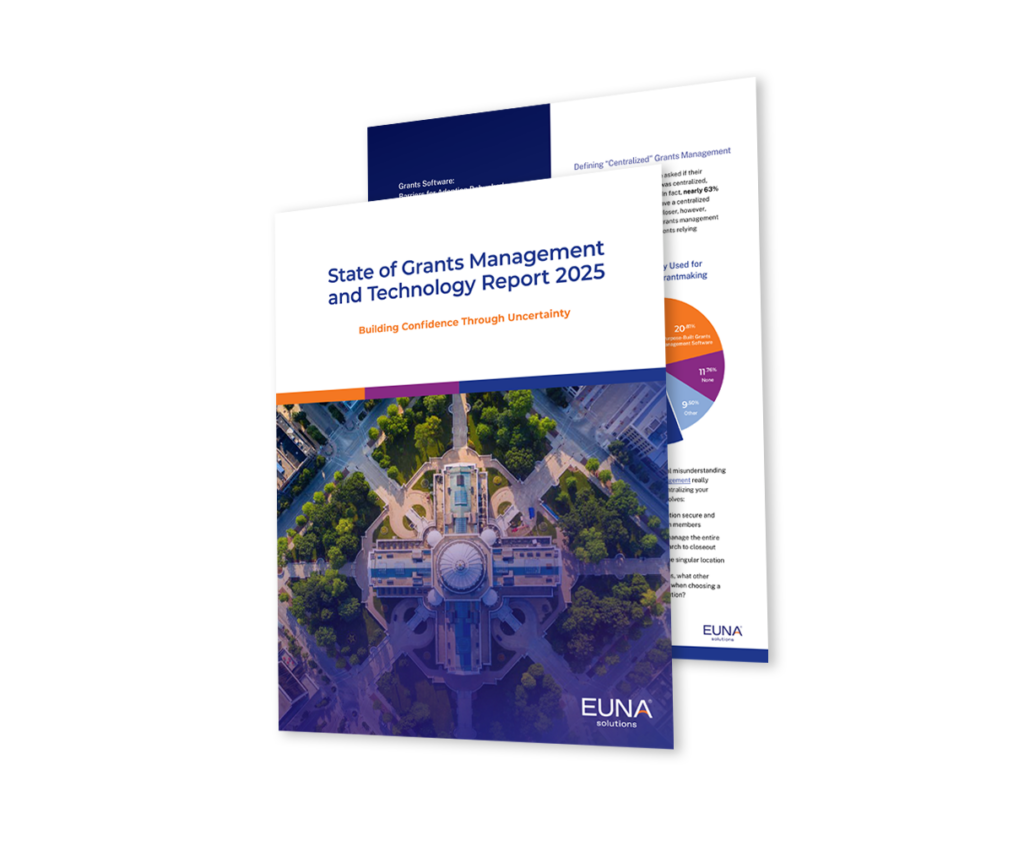The first instalment of our three-part blog series on the 2019 State of the RFP.
One of the biggest gripes about the public procurement process is that it takes too long. RFPs have a reputation for dragging on, which can cause problems for end users in delayed projects or lost budget.
Internal departments want to get procurements done faster, so they can get on with their work. On the other hand, procurement teams want to be involved in the process earlier, so they can make sure all the boxes are checked without the last-minute crunch time.
Both sides can agree on one thing: nobody wants the RFP process to take forever.
How long do RFPs actually take, and what can public procurement teams do about it? To answer that, we investigated the data from over 6,000 public sector RFPs conducted through the Euna Procurement platform.
How long is the average public sector RFP cycle time?
We found that the average public sector RFP process took 57 days from posting to award. This does not include the additional time spent on pre-planning and requirements-gathering before the RFP is posted.

Key Takeaways
- The vast majority (78%) of RFP projects conducted through the Euna Procurement platform are wrapped up within 1- 2 months
- Only 6% of RFP projects take over 4 months
- Only 3% of RFPs take over 6 months
Taking a closer look, we can see that there is some variation between different types of public sector organizations:

Key Takeaways:
- Healthcare organizations have the longest RFP process at nearly 80 days on average
- K12 schools and higher education institutions had the shortest RFP process, at 51 days on average
Digitization yields time-savings
With increasing pressure to get RFPs out the door, procurement teams are often racing against the clock as their default mode. This approach just isn’t sustainable: it introduces errors and risk for your organization, not to mention burnout and frustration for your staff.
For many teams, digitization offers a solution. By bringing the RFP process online, teams can cut down on manual work and save time through process efficiencies—ultimately cutting RFP cycle times in half.
Here’s a breakdown of common activities in the RFP process that can be streamlined by using an online platform to manage the RFP process:
| Without eSourcing | With eSourcing | |
| Receiving supplier documents | 2h | 0h |
| Distributing supplier responses | 3h | 0h |
| Total evaluator scoring time | 16h | 2h |
| Aggregating evaluator scores | 12h | 0h |
| Analysis and decision-making | 16h | 2h |
| Creating reports and responding to vendor debriefs | 6h | 1h |
An added benefit of digitization is clear visibility into the procurement process—including metrics such as RFP cycle times. Knowing where you stand, how long your RFPs take, and the impact you’re having helps with resource planning while also fueling continuous improvement in your procurement function.
Shorter RFP cycle times, better stakeholder relationships
For public procurement to work, procurement teams and their internal departments need to get on the same page. This means that procurement teams must find a way to provide faster, more efficient service to their stakeholders, shedding procurement’s slow reputation once and for all.
Whether your RFP process clocks in around the benchmark of 57 days or not, it’s worth investigating how long your RFPs take and where there are opportunities to shorten cycle times and create a win-win for your organization.

